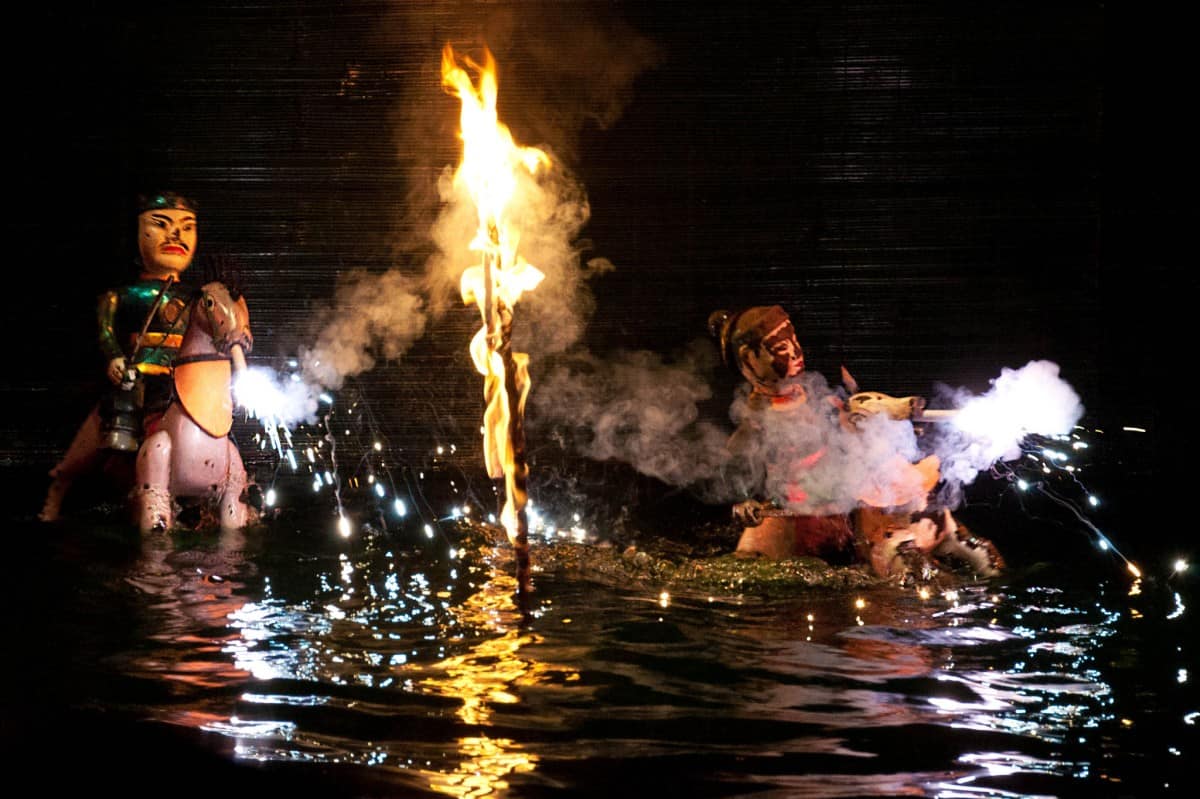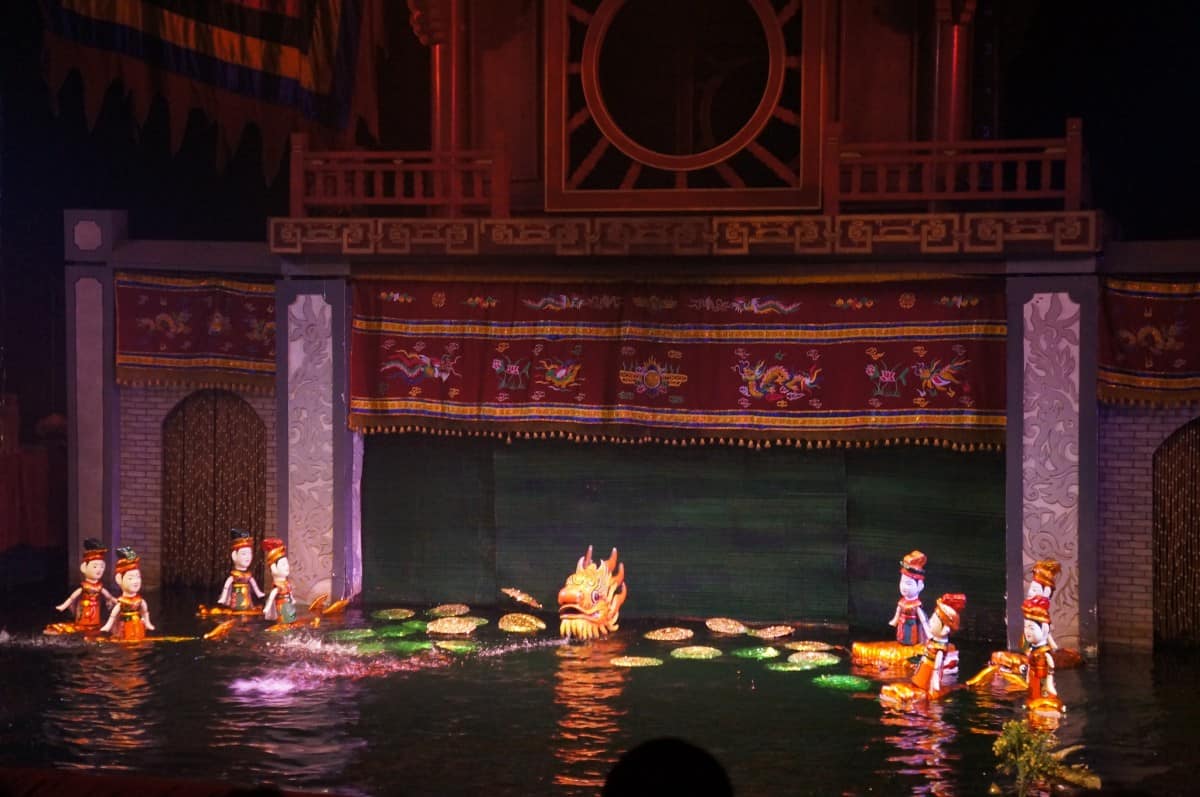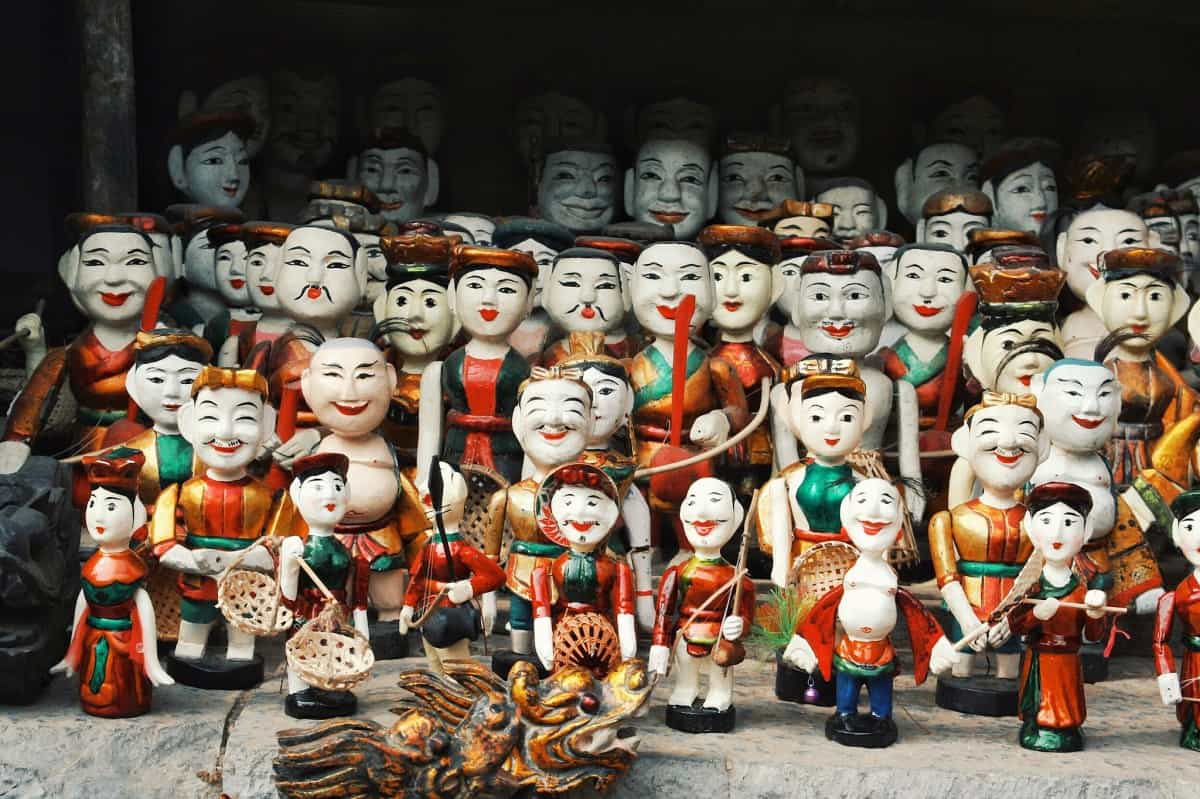Water puppetry – a unique folk art form of Vietnam
Water puppetry is a unique and creative folk theater art form imbued with the traditions of the wet rice agricultural civilization, born at the same time as the Dai Viet culture.

The traditional puppetry art of the Vietnamese people is associated with the natural conditions and daily life of wet rice farmers in the Northern Delta. With his father’s rich imagination and intelligent creativity, he contributed to the formation of the water puppet art form. From the unique features of an art form with folk elements, water puppetry has quickly become a traditional art and is considered a unique intangible cultural heritage of the Vietnamese nation. This is also a distinct traditional culture of the Vietnamese people compared to the puppetry art of countries around the world.

Water puppetry is often performed on festivals, village festivals, happy days, and New Year’s Day… Water puppetry is a type of theatrical art, so the art of water puppetry is also synthetic and multi-faceted.
The uniqueness of this art form is expressed right from the name “Water puppetry” which is taking water as the stage for performance. The water surface of the pond is both a stage, an environment, a scene, and a supporting character for puppets operating under the talented control of artists. Above the water is a stage, and below the water is a control system with machines, poles, and ropes connected to the game room.

The water puppetry room is a puppet house or a water hose, usually erected in the middle of a pond or lake with the architecture symbolizing the roof of the communal house in the countryside of Vietnam. The water puppeteer stood in the game room to control the puppet. They manipulate each pole, rope, leap… or pull the puppet with a string system arranged outside or under the water to move the puppet… The success of the water puppet mainly depends on the movement of the body form, action plays its part.
The water puppet theater is a space in front of the game room, usually equipped with flags, fans, elephants, parasols, gates, rows of code… In the art of water puppetry, puppetry is the direct actor, the most important material and technical basis contributing to the success of the game.
To have a complete performance, the art of water puppetry must gather the talented minds of many artists, including artists specializing in composing games, artisans specializing in puppetry, and artisans specializing in making machines. The conductor and the puppeteer on the stage are in harmony with the lyrics and voices of the singer. Each job requires talent as well as the passion and enthusiasm of each individual and the unity and consensus of the collective of water puppetry artists.

The music in water puppetry usually plays a leading role and is quite bustling with lyrics, drums, drums, horns, chimes, fireworks, and fireworks that open the flag from the water, in shimmering lights and displays. Magical smoke… Music in water puppetry often uses cheo tunes or folk songs of the Northern Delta.
Over the years, Vietnam’s water puppetry art has been protected and developed commensurate with its stature in the national cultural heritage. Many Vietnamese water puppetry troupes have participated in a number of international puppetry festivals, won many high awards, and attracted the attention of audiences from many countries around the world. Water puppetry has become the pride of the country, the pride of Vietnam in the international arena.
Best place to see Water Puppetry in Ha Noi: Thăng Long Water Puppet Theatre


